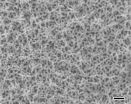Scientists develop new technique that reduces halo effect caused by lenses
2015-04-15
(Press-News.org) Amsterdam, April 15, 2015 - In a recent study published in Optics Communications, scientists from Bar-Ilan University in Israel have presented a new technique that significantly reduces the halo effect that is generated when using multifocal (contact and intra-ocular) lenses and looking at bright point sources in dark conditions.
Presbyopia is a result of natural aging and stems from a gradual thickening and decrease in elasticity of the lens inside the eye. Corrective lenses used to address presbyopia often lead to a halo effect. This is basically a glow or color light pattern observed when looking at a bright source of light in front of a dark background. It is mostly experienced at night when people see halos around street lamps and car headlights, and it can make driving at night unsafe or even impossible in extreme cases.
Co-author of the paper, Prof. Zeev Zalevsky, head of the Electro-Optics study program of the Faculty of Engineering at Bar-Ilan, explains, "Our solution involves smoothening the surface structure of a contact lens or an intra-ocular lens that has extended depth of focus or multifocal capabilities. The smoothening does not complicate the fabrication complexity of the lens and yet yields the same optical performance in treating presbyopia and assisting people after cataract surgery, but with about one order of magnitude smaller. This allows people that use such lenses to be able to use them also at night."
More and more commercial ophthalmic products incorporate EDOF (extended depth of focus) and multifocal technologies in contact and intra-ocular lenses to solve presbyopia. Until now, such lenses were very problematic when used in dark illumination conditions. The researchers say their proposed concept can resolve the above difficulties and make the existing products even more applicable and useful.
INFORMATION:
Read more: http://www.elsevier.com/connect/keeping-visions-halo-effect-at-arms-length
Article details:
"Ophthalmic halo reduced lenses design" by Ofer Limon and Zeev Zalevsky (doi:10.1016/j.optcom.2014.12.049). The article appears in Optics Communications, Volume 342, 1 May 2015, Pages 253-258 published by Elsevier.
The article is freely available until 31 Dec 2015 and is available at: http://www.sciencedirect.com/science/article/pii/S0030401814012139
After this time copies of the paper are available to credentialed journalists upon request, contact Elsevier's Newsroom at newsroom@elsevier.com or +31 20 4853564.
About Optics Communications
Optics Communications invites original and timely contributions containing new results in various fields of optics and photonics. The journal considers theoretical and experimental research in areas ranging from the fundamental properties of light to technological applications. Topics covered include classical and quantum optics, optical physics and light-matter interactions, lasers, imaging, guided-wave optics and optical information processing.
http://www.journals.elsevier.com/optics-communications/
About Elsevier
Elsevier is a world-leading provider of information solutions that enhance the performance of science, health, and technology professionals, empowering them to make better decisions, deliver better care, and sometimes make groundbreaking discoveries that advance the boundaries of knowledge and human progress. Elsevier provides web-based, digital solutions -- among them ScienceDirect, Scopus, Elsevier Research Intelligence and ClinicalKey -- and publishes over 2,500 journals, including The Lancet and Cell, and more than 33,000 book titles, including a number of iconic reference works. Elsevier is part of RELX Group plc, a world-leading provider of information solutions for professional customers across industries.
http://www.elsevier.com
ELSE PRESS RELEASES FROM THIS DATE:
2015-04-15
HOUSTON - (April 15, 2015) - A cobalt-based thin film serves double duty as a new catalyst that produces both hydrogen and oxygen from water to feed fuel cells, according to scientists at Rice University.
The inexpensive, highly porous material invented by the Rice lab of chemist James Tour may have advantages as a catalyst for the production of hydrogen via water electrolysis. A single film far thinner than a hair can be used as both the anode and cathode in an electrolysis device.
The researchers led by Rice postdoctoral researcher Yang Yang reported their discovery ...
2015-04-15
The slow implementation of the Chemical Facility Anti-Terrorism Standards (CFATS) in the USA as part of homeland security and anti-terrorism measures is leaving chemical plants vulnerable and putting at risk the safety of American citizens, according to research published in the International Journal of Critical Infrastructures.
Maria Rooijakkers and Abdul-Akeem Sadiq of the School of Public and Environmental Affairs, at Indiana University-Purdue University, in Indianapolis, explain that post-9/11 efforts to safeguard the chemical sector gave the Department of Homeland ...
2015-04-15
WASHINGTON -- U.S. communities and federal agencies should more intentionally seek to create healthier communities during disaster preparation and recovery efforts - something that rarely happens now, says a new report from the Institute of Medicine. By adding a health "lens" to planning and recovery, a community can both mitigate the health damage caused by disasters and recover in ways that make the community healthier and more resilient than it was before.
"We have an opportunity to transform our response to devastating disasters into an effort to meaningfully enhance ...
2015-04-15
MIT chemists have devised an inexpensive, portable sensor that can detect gases emitted by rotting meat, allowing consumers to determine whether the meat in their grocery store or refrigerator is safe to eat.
The sensor, which consists of chemically modified carbon nanotubes, could be deployed in "smart packaging" that would offer much more accurate safety information than the expiration date on the package, says Timothy Swager, the John D. MacArthur Professor of Chemistry at MIT.
It could also cut down on food waste, he adds. "People are constantly throwing things ...
2015-04-15
Young offenders in late Victorian times were much less likely to go on to commit other crimes after serving a sentence in an institution than their counterparts today, new research shows.
A study of the lives of 500 children committed to reformatory or industrial schools over a century ago showed that only 22% re-offended during the rest of their lives after their release. This compares with today's figure of 73% of young people re-offending within a year after release from custody.
Professor Pamela Cox told the British Sociological Association's annual conference ...
2015-04-15
LAWRENCE -- Most partisans -- average Democratic and Republican voters -- act like fans in sports rivalries instead of making political choices based on issues, according to a new study with a University of Kansas researcher as the lead author.
"What is the consequence of today's polarized politics? What's motivating partisans to vote in this climate?" said Patrick Miller, a University of Kansas assistant professor of political science. "For too many of them, it's not high-minded, good-government, issue-based goals. It's, 'I hate the other party. I'm going to go out, ...
2015-04-15
FAYETTEVILLE, AR - Determining and implementing orchard management practices that can improve soil organic matter is one of the primary goals of the USDA's National Organic Program. For producers in the southeastern United States, where interest in small-scale and organically managed orchards is growing, the challenge can be finding combinations of groundcover management systems and organic nutrient sources that can simultaneously improve soil quality. A new research study provides producers in the region with valuable information about effective organic orchard management ...
2015-04-15
It's not all bad for crow chicks who have to share their nest with an uninvited pushy guest such as a cuckoo youngster. For one, they can sit back and wait for food to arrive while the cuckoo chick does all the begging for nourishment. So says Diana Bolopo of the University of Valladolid in Spain, who led a study into the pros and cons associated with the parasitic relationship of the great spotted cuckoo with the carrion crow. The findings are published in Springer's journal Behavioral Ecology and Sociobiology.
When great spotted cuckoos parasitize and take over magpie ...
2015-04-15
This news release is available in German.
Modern, machine-friendly agriculture is dominated by monocultures. One single cultivar - one genotype of a crop species - is cultivated on large areas. Favored cultivars are optimized for high yields and often contain only few natural plant defense compounds. Unfortunately, these extensive monocultures of identical plants can become an ecological wasteland and cause permanent damage to the ecosystem, especially when combined with blanket application of fertilizer and pesticides. Scientists at the Max Planck Institute ...
2015-04-15
Researchers from North Carolina State University and the University of Colorado, Boulder, have developed a statistical model that allows them to tell where a dust sample came from within the continental United States based on the DNA of fungi found in the sample.
The primary goal of the research was to develop a new forensic biology tool for law enforcement or archaeologists. "But it may also give us a greater understanding of the invisible ecosystems of microbial life that we know are all around us, but that we don't fully comprehend," says Neal Grantham, a Ph.D. student ...
LAST 30 PRESS RELEASES:
[Press-News.org] Scientists develop new technique that reduces halo effect caused by lenses


